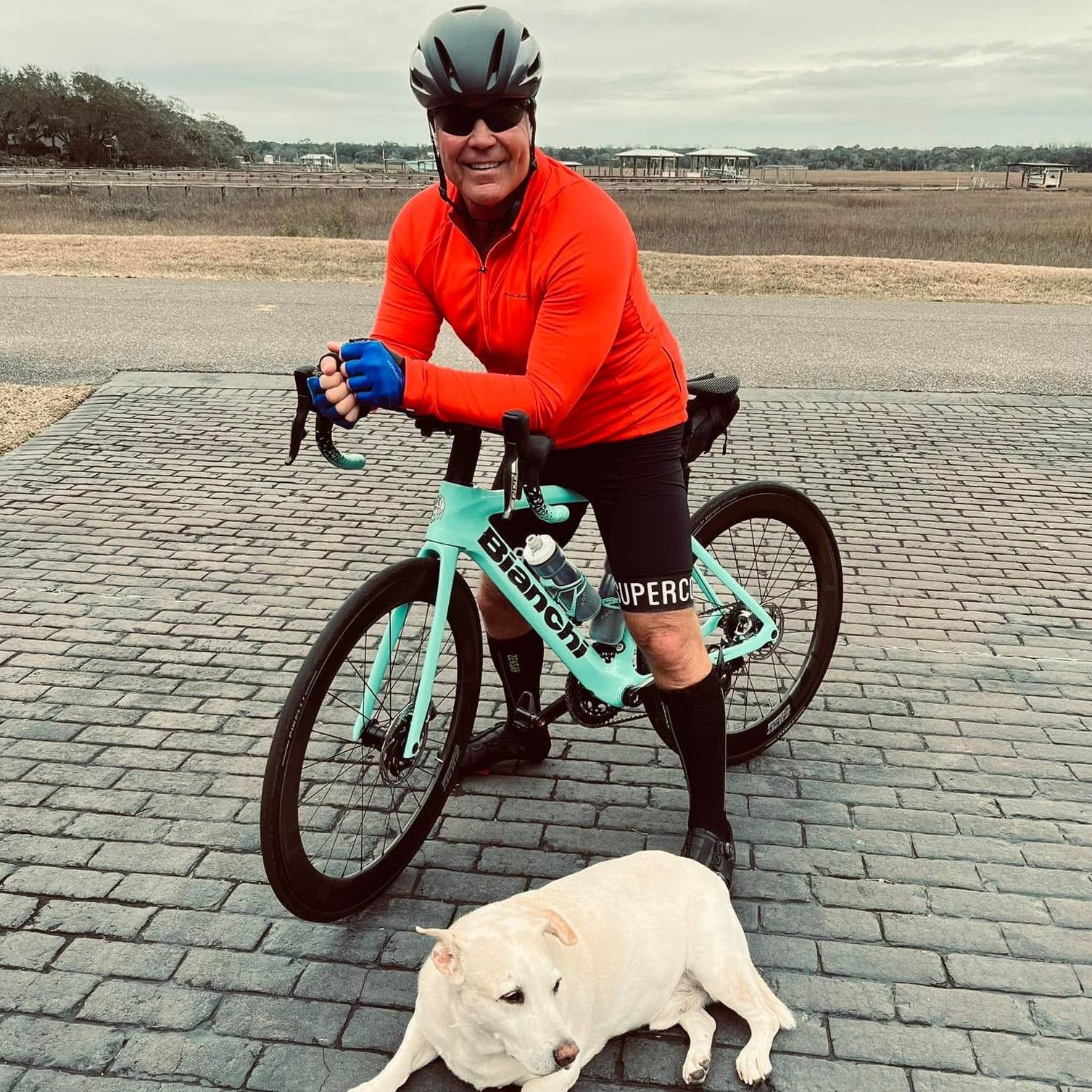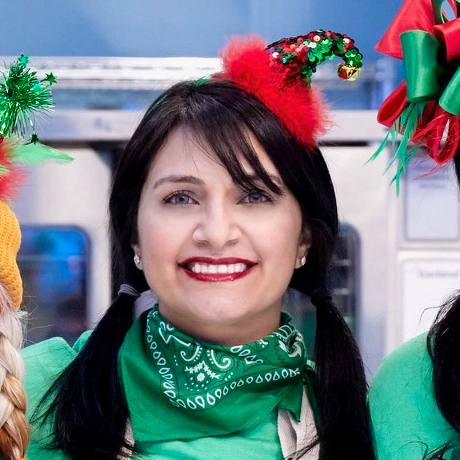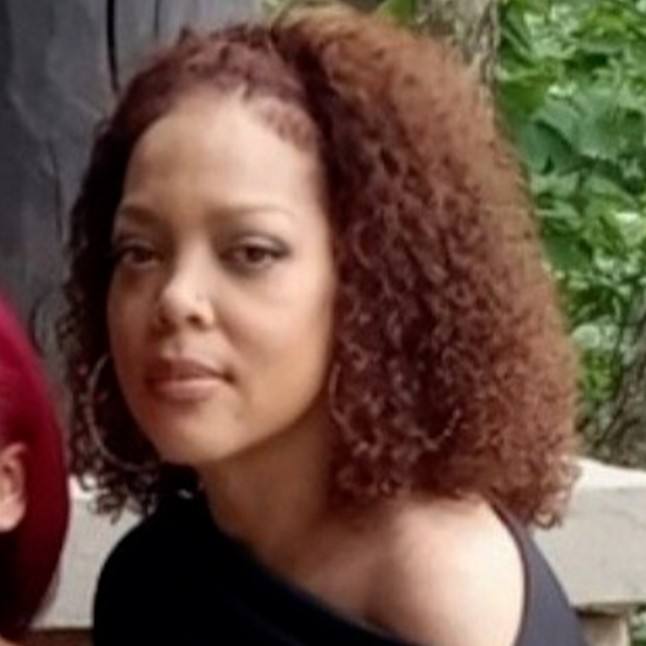
Although they've never met, Carrie Fairchild and Emilia Haro are linked through the experience of being part of a chain of kidney transplants that Carrie started as an altruistic donor and Emilia benefitted from as a transplant recipient.
Carrie Fairchild and Emilia Haro have never met, but the two women share similarities. Both live in Arizona. Both have loving families. And both have a meaningful link to the Transplant Center at Mayo Clinic in Arizona.
Carrie, from Tucson, and Emilia, from Casa Grande, underwent kidney surgeries within a few days of each other in January. Emilia, who has battled lupus for most of her 35 years, received a lifesaving kidney transplant from a stranger. Carrie, recognizing that more than 100,000 people in the U.S. are in great need of a kidney transplant, donated one of her kidneys to a different stranger. But Carrie's donation was the catalyst that led to Emilia's transplant.

Because of patient privacy, Emilia doesn't know who her living kidney donor was, nor does Carrie know who received her healthy kidney. And unbeknownst to each other, Carrie and Emilia were both part of the same Mayo Clinic paired kidney donation, often called a kidney chain — a creative way to expand the pool of kidneys available for transplantation.
A chain starts with an altruistic donor: someone who wants to donate a kidney to a stranger out of a spirit of generosity. That defines Carrie, who contacted Mayo Clinic and began the process to be tested to donate to someone in need. In such a chain, the kidney from the altruistic donor is transplanted into a recipient who had a donor who was willing to donate a kidney but who was not a match for the intended recipient. That would-be donor then becomes a match for someone else. The chain goes on, helping other patients along the way.
At Mayo Clinic, the chain Carrie started continued from Arizona to Mayo Clinic in Rochester and then to Mayo Clinic in Florida.
The journeys Emilia and Carrie took to their shared kidney chain were significantly different. Originally, Carrie had intended to donate a kidney to a friend in California who needed a kidney, but the logistics didn't work out. Emilia was hoping for a kidney that could end her long wait on dialysis.
Carrie: Choosing to make a difference
Undeterred that her first attempt to donate was thwarted, Carrie was still determined to donate a kidney. "It wasn't important to me at all who my kidney went to," she says. "There was someone out there who needed it and whose family was in pain watching their loved one suffer."
Following several weeks of testing at Mayo Clinic, Carrie was delighted to get the news that she was approved to donate her kidney. "I knew there were things in this mad world that could make a difference," she says.
"I'm blessed in my life, and it was my privilege to be able to do something that makes a tangible difference in someone else's life."
Carrie Fairchild
Although Carrie received praise from friends and had the full support of her family to proceed with her plan to donate a kidney to a stranger, she's uncomfortable with people implying that she is a hero for doing so. "I'm blessed in my life, and it was my privilege to be able to do something that makes a tangible difference in someone else's life," she says.
Her altruism was made easier by the fact that in her work as a management coordinator for the city of Tucson, she and other city employees are given 30 days of paid time off from their jobs if they are a kidney or bone marrow living donor.
Emilia: Challenging path to a second transplant
Emilia's journey to the kidney chain was more arduous. Her surgery was her second kidney transplant. At age 17, complications related to her lupus affected her kidneys, and Emilia was put on dialysis for seven months. For her first transplant, her sister was approved to donate a kidney to Emilia. That kidney lasted 14 years, allowing Emilia to resume a normal life with school and work.
When Emilia began feeling sick two years ago, she sought medical care. At that time, she was stunned to learn that she yet again had to undergo dialysis because her kidney was not doing well. This time, she was on dialysis for two years at a center in Casa Grande.
The reality set in that she would need a second kidney transplant. The family prepared, but the wait for a kidney took a toll on Emilia and her mom, whose name also is Emilia. "Each time the phone would ring, we would get our hopes up," says young Emilia.
Because the wait for a kidney was taking a long time, and there were no living donors stepping forward, Emilia's mom took matters into her own hands. She extended her appeal for a kidney for her daughter to the streets of Casa Grande and Phoenix — via her car.
She boldly decked her vehicle with a sign announcing, "My daughter needs a kidney," and she included Emilia's blood type and phone number. "I would just drive everywhere — to Mayo and back and forth in town," says the elder Emilia.
When young Emilia found out about her mom's level of concern and the traveling billboard car, she says, "It's so sweet," but admits to a bit of embarrassment for all the attention. Local media soon picked up the story about the car and the plea for a kidney. That's when calls came in from all over the U.S. Many callers made inquiries, and some even offered to be tested to be Emilia's kidney donor. None of those inquiries worked out. But Emilia, the mom, generously thanked everyone who called.
"I want Emilia to have this happy, healthy kidney for a long time. I just want her to be healthy and to enjoy her life."
Emilia Haro
Shortly before Thanksgiving 2018, Emilia and her mom were offered a glimmer of new hope. They received the news that there was a possibility for Emilia to be part of a kidney chain. Then the call that their family had waited for finally came. Emilia would receive a kidney. On Jan. 8, Emilia underwent her kidney transplant as one person in the chain that Carrie had begun.
For Emilia's mom, it was a joyous time to be able to look to the future with optimism. "I want Emilia to have this happy, healthy kidney for a long time," she says. "I just want her to be healthy and to enjoy her life."
Watch this video to learn more about kidney chains:
HELPFUL LINKS
- Learn about living-donor kidney transplants.
- Check out the Mayo Clinic Transplant Center.
- Connect with others talking about transplants on Mayo Clinic Connect.
- Explore Mayo Clinic.
- Request an appointment.







